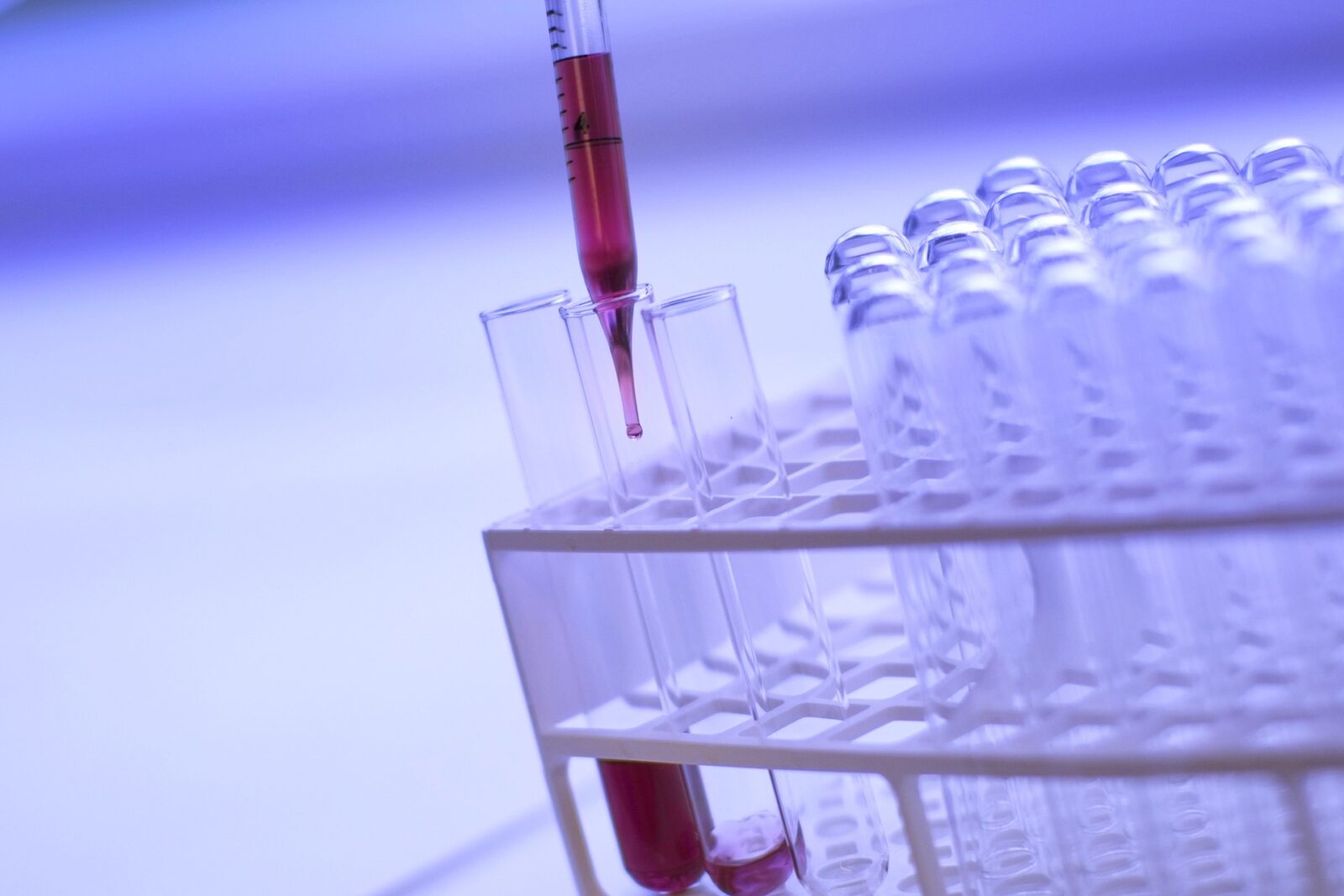Chamow & Associates is pleased to present a blog series detailing best practices for working with a contract development and manufacturing organization (CDMO). This series is intended to provide a sponsor company with sound advice in finding and choosing the right CDMO for its product development and in managing that CDMO to perform to the company’s expectations. We continue our series with – “Analytical Methods – What Are The Methods and How To Choose Them?”.
Analytical Methods
Control of quality attributes that affect product performance and stability is critical to success. Therefore, testing performed to release the bulk drug substance or drug product for clinical use should include the following five quality attributes: Identity, Purity, Potency, Strength, Safety. For monoclonal antibodies (mAbs), a set of platform methods are often used; these are physicochemical methods that are applied to recombinant glycoproteins generally and to mAbs as a class. The platform methods are provided by the CDMO. In addition, methods that measure biological activity are product specific and must be provided by the sponsor. So taken together, the platform physicochemical and specific biologic activity methods, along with a set of USP/Ph. Eur. general and safety tests, comprise the analysis that is reported in the certificate of analysis (CofA).
As mentioned, release testing will always include tests that measure one of the indicated five attributes. We provide below brief descriptions of attributes and methods that are generally included in testing for release of bulk drug substance or drug product.
Identity
- pI and Charge Heterogeneity: Capillary isoelectric focusing (cIEF) or cation exchange (CEX)-HPLC is often used as a release test to confirm identity and assess charge heterogeneity. Because the net charge of a mAb derives from its amino acid sequence and post-translational modifications, these methods can be used to characterize the pattern and cIEF can confirm pIs of charged isoforms that are unique to each mAb product.
- Peptide Map: In addition to confirming pI, identity can be established by peptide fingerprinting. In this technique, the IgG molecule is reduced and alkylated and an enzyme is used to cleave the amino acid chains into short peptides, which are separated using HPLC. The pattern forms a “peptide map”, which is unique for each IgG molecule.
Purity
- Monomer Size and Aggregation: These attributes are characterized for release testing and analysis of stability. Size analysis tests include sodium dodecyl sulfate-polyacrylamide gel electrophoresis (SDS-PAGE), capillary electrophoresis-SDS (CE-SDS), and size exclusion chormoatography (SEC). SDS-PAGE and CE-SDS are denaturing techniques; SEC is a native technique. Of SDS-PAGE and CE-SDS, the latter is more commonly used because it is quantitative. The principal method for soluble aggregate quantitation is SEC. The presence of product aggregates and increase during storage is a main purity concern for the FDA.Fragments/IgG4 Half-Molecules: Fragments of any subclass of IgG can result from proteolysis or chemical degradation. Due to structural difference in the hinge, human IgG4 tends to form half molecules both in vitro and in vivo. Since this can be problematic for drug product stability, an engineered version (S228P) of the IgG4 heavy chain is typically used for IgG4 therapeutics. To monitor the formation of fragments of any mAb subclass or half-molecules of IgG4, CE-SDS, nonreducing SDS-PAGE, and SEC can be used. It is recommended that CE-SDS analysis of the reduced mAb (IgG1–2) be included as a release test to assess formation of product fragments as a purity method.
Potency
- For mAbs, potency can be measured in two fundamental ways. The first is binding to antigen in a plate-based method such as enzyme-linked immunosorbent assay (ELISA). This type of assay demonstrates that the mAb is biologically active insofar as its ability to bind to its target antigen is intact, but it provides no information about whether effector function of the mAb is active. For this, a plate based method for Fc receptor binding can be used. Alternatively, a cell-based method may be needed, one that couples binding of antigen with effector function to cause, for example, a target cell to be killed, completing the mechanism of action. Cell-based potency methods can be done in vivo (in an animal) or in vitro (using cells in culture). The purpose of the test is to correlate the chosen bioassay with the clinical response. As noted above, the choice of a potency method depends on understanding the product’s mechanism of action (MoA). If the MoA cannot be determined completely [e.g., antibody dependent cell-mediated cytotoxicity (ADCC) vs. antibody dependent cell-mediatedphagocytosis (ADCP)], additional potency assays should be used.
Strength
- Protein Quantitation:Protein concentration is characterized for release testing by measuring light absorption. How strongly a protein absorbs light at a particular wavelength is an intrinsic property of the protein based on its chemical composition. Proteins that contain aromatic amino acids tyrosine and tryptophan absorb ultraviolet light at 280 nm. Based on its unique absorbance at 280 nm, the proteins is assigned a molar extinction coefficient which is used determine the concentration of drug in solution following measurement of absorbance at 280 nm. More recently, variable pathlength slope spectroscopy has been used to determine concentration without sample predilution, which is particularly useful for high concentration protein formulations.
Safety
- These are compendial methods that ensure the product is free of bacterial endotoxin, bioburden and particulates.
In designing assay methods for use to release pharmaceutical products, the assays must pass several tests, including linearity, sensitivity, accuracy, precision, selectivity and robustness. The process of confirming these qualities is referred to as “qualification” and must be done before methods are used to support cGMP production.
In addition to tests used for release and stability, other methods are used to characterize the reference standard of the mAb product. Some of these are listed below:
- Molecular Weight: Analysis of molecular weight is performed for characterization. Confirmation of the predicted molecular weight of the expressed glycoprotein product ensures fidelity of the recombinant protein expression system to produce the intended molecule. The method of choice is ESI-MS for its excellence in determining mass accurately. For glycoproteins and mAbs, glycoform variation may result in multiple species with different MWs. Therefore, the expected MW of the non-glycosylated variant can be predicted based on its amino acid sequence and confirmed by reduction and deglycosylation of the glycoprotein.
- Free Sulfhydryl Group: Analysis of free sulfhydryl groups is performed for characterization to ensure correct folding of the protein therapeutic. The 3D structure of glycoproteins is often stabilized by disulfide bonds. The location of sulfhydryls can be predicted by combining amino acid sequence with domain folding patterns and is an indication of proper folding. Ellman’s Reagent — 5,5 ́dithiobis (2-nitrobenzoic acid) is recommended.
- Heavy Chain Glycosylation: Glycosylation is typically determined for characterization, but it is also monitored for release when it affects the potency of the product. For a mAb, glycosylation may be critical if effector function [ADCC, ADCP, complement-dependent cytotoxicity (CDC)] has a role in its mechanism of action. There is no preferred test method for this attribute. When qualitative and quantitative lot-to-lot testing of carbohydrates is needed, monosaccharide compositional analysis is advised.
- C- and N-terminal Heavy Chain Heterogeneity: This attribute is measured for characterization. Invariably, human heavy chains contain a lysine residue at the C-terminus. The residue is often clipped off during biosynthesis, creating the potential for charge heterogeneity of the assembled oligomer. The charge heterogeneity caused by C-terminal Lys and other potential charge variations (deamidation, oxidation) is monitored using CEX-HPLC.
- Disulfide Structure: Disulfide structure is analyzed to characterize the protein and is not required for release. This analysis is a deeper dive to create a linkage map of cysteines in the protein sequence. Structure should be determined during process development.
Taken together, it should be clear that analytical method development is an important component of biologics development. Analytical methods are used for in process monitoring, for characterization, and release and stability of bulk drug substance and drug product. They must be planned carefully as part of the overall program.
Chamow & Associates assists biotechnology companies to develop biologics for clinical testing and welcomes your inquiry.





